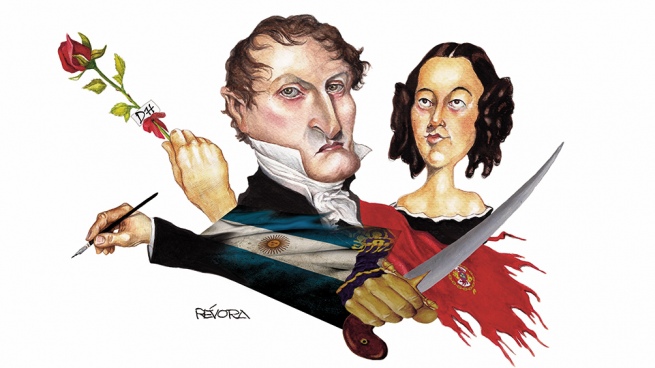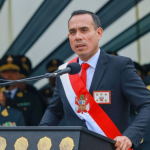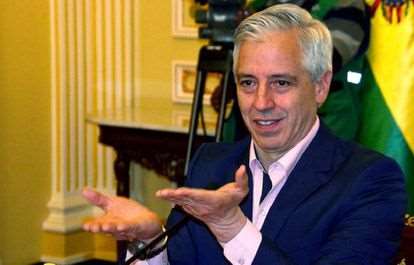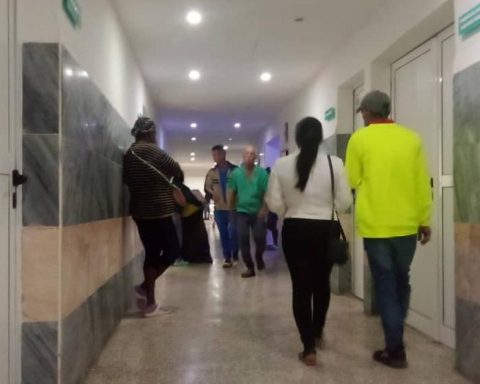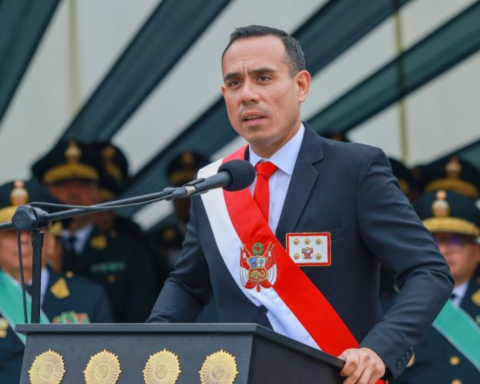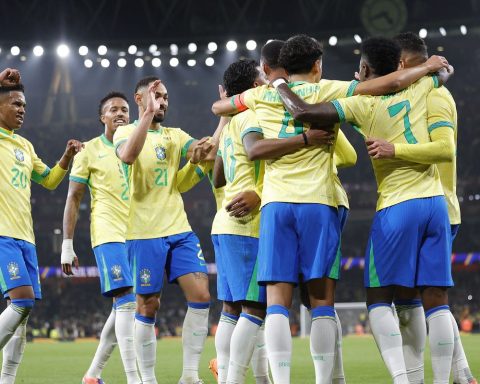The portrait shows Manuel Belgrano seated on a chair whose back is barely visible, his chubby legs crossed, with his left hand delicately resting on one of them; the fine features, the reddish lips.
The portrait shows one of the fundamental characters of the fight for American independencejust where rigged historians insinuated that there was a “detour” (homosexuality as “something bad”), a cone of shadow that sought to project darkness.
Is that Belgrano fought on the battlefield but also on the field of ideas: embraced the freedom, equality and fraternity that the French Revolution proclaimed; he promoted freedom in all its possibilities; he advocated a fair distribution of wealth; claimed for the rights of Indians and women.
“Manuel Belgrano continues to arouse the admiration of those who know him and the contempt of those who continue to see in him a denouncer of the injustices, inequities and national backwardness caused by those he called ‘supporters of themselves'”, assures the historian Felipe Pigna in an article published in “The historian”. And he adds that it is those same sectors that “launched and they managed to install the version that ‘accused’ Belgrano of being homosexual”since “in their macho minds that fact managed to disqualify their work”.
But Belgrano was heterosexual, single and had two children: one with a woman married to a royalist, another with a woman married to an aristocrat. None of this serves to establish hierarchies or evaluations. Yes, to tell a love story.
Love love
In 1802 Manuel Belgrano had been at the head of the Consulate of Buenos Aires for eight years, an institution that depended directly on the Spanish Crown and from which he had promoted free, state and compulsory education and promoted improvements for agriculture, industry and commerce. In 1802 and at the Consulate, Belgrano met his first love.
In 1802, Begrano met his first love, María Josefa Ezcurra, aged 17, who was almost twice his age.
It was during a visit that Don Ignacio de Ezcurra made to the Consulate accompanied by his daughter Maria Josefa, 17 years old. Manuel was almost twice her age then, he was 32. But the distance is always short when the passion is great. Between occasional phrases and promising silences, love appeared.
However, Don Ignacio’s plans for his daughter were different: to marry her to a highborn cousin who had just arrived from Pamplona. What’s more, Although Manuel was a lawyer and civil servant, he was not an aristocrat (The good position of his family was due to commercial activity). Besides, he had weird ideas. A revolutionary ideology that was becoming more difficult for him to conceal.
It was so María Josefa “Pepa” Ezcurra y Arguibel contracted a marriage with the royalist Juan Esteban Ezcurra. Love was left for a better occasion, which was not long in coming. The May Revolution, which Belgrano (he was a member of the Primera Junta) promoted with the same enthusiasm as Mariano Moreno and Juan José Castelli, made Cousin Juan return to the Peninsula in terror. María Josefa also felt free from the royalists.
The heart, a battlefield
But things are not usually so simple and less so for women. When María Josefa was able to dispose of her life, Manuel was no longer there. Or he was actually somewhere else: taking over the Army of the North. And it was for him. Although the relationship kept the label of “clandestine” and “without papers”.
In March 1812 Pepa got on the “Tucumán courier”, which took a month to reach its destination. When he finally arrived in San Miguel de Tucumán, Manuel was already in Jujuy. She was not discouraged. She landed in San Salvador at the end of April.
María Josefa and Manuel joined, at last, on the battlefield. In “Belgrano. The great Argentine patriot”, historian Daniel Balmaceda recalls that “they stayed together in the north for around eight months, which, in turn, would be the only ones”. Also that in those months three historical events took place: the blessing of the Argentine flag in San Salvador de Jujuy (on May 25), the exodus from Jujuy (begun on August 23) and the battle of Tucumán (September 24).
Balmaceda wonders how many women would leave Buenos Aires to go to the border, “where the war was not a commentary on social gatherings but a daily exercise.” Very few. Y some of them were already in Belgrano’s army, such as Juana Azurduy and María Remedios del Valle. And with troops in charge. It is true, they did not come from the port but from the heart of the colony. Because only María Josefa came from the heart of Belgrano.
However, when María Josefa found out that he was there, she decided to return. She was having a child by a man she was not legally married to., since at least formally she was still married to her cousin. She was not enough to be together. Yes, to have a child.
The firstborn was called Juan, he was born on July 30, 1813 in Santa Fe and was adopted by the newlyweds Juan Manuel de Rosas and Encarnación Ezcurra.Peppa’s sister So Juan grew up with the name of Pedro Rosas. He only found out who his biological parents were – that his mother was Aunt Pepa and his father was also one of the fathers of the country – when he turned 24 years old.
Manuel and María Josefa had a son, Juan, who was adopted by Juan Manuel de Rosas and Encarnación Ezcurra.
The recovery of identity did not happen by chance. In 1837 Juan Manuel de Rosas fulfilled his promise to tell the young man the truth only when he was of legal age. Pedro Rosas y Belgrano would marry Juana Rodriguez in 1851. María Josefa Ezcurra, his mother, would be the godmother of the wedding.
A king in flip flops
In July 1816 Belgrano returns from Europe. Two years had passed since the meeting with General José de San Martín in Yatasto, where he handed over command of the Army of the North after the military defeat in Upper Peru. And he had just concluded, together with Bernardino Rivadavia, a diplomatic mission in the Old Continent seeking support for the national government.
Belgrano returns to become one of the great protagonists of the Congress of Tucumán that will declare independence on July 9 of that same year. Such was his importance that during the secret session held three days before the conclave it was he who proposed electing an Inca king and establishing the seat of an American government in Cuzco.
a little french love
Manuel Belgrano had a third love. A forbidden romance with French Isabelle Pichegru. It happened in London, in 1814, during the diplomatic mission entrusted to him by the Directory to join forces in Europe.
He was a hero of independence. She claimed to be related to a general of the French Revolution: Jean-Charles Pichegru. The latter turned out to be false. But nothing prevented them from living a brief, passionate love.
When Manuel was back in the Río de la Plata she came looking for him. But he (once again) was not where he “should” be. This time she breathed a sigh of relief: Pichegru’s insistence on establishing a more stable bond had found the wrong man.
The proposal, which had the support of San Martín and Miguel Martín de Güemescontemplated the monarchical restoration that Europe was experiencing (a republic in the South of the world would be irritating for the victors of Napoleon), the unity of Ibero-America and the beginning of a democratizing process under a kind of constitutional monarchy with Juan Bautista Condorcanqui (Túpac Amaru) at the head and controlled by a lifetime chamber of caciques and another of elected deputies.
Belgrano’s initiative was shipwrecked by the opposition of the representatives of Buenos Aires, with Tomás Manuel Anchorena at the head, who considered it inadmissible to be “mandated” by a “monarch of the caste of chocolates”, by “a king on dirty legs” , for a “monarchy in flip flops”.
so things there was a declaration of independence, but the form of government and the national organization would be left for another opportunity. That is, for the resolution of the civil wars that would take much of what remained of the nineteenth century.
lover, father, warrior
There was still a celebration, because a step forward is a step forward. And dance. So Belgrano, now again Manuel, He fell in love with a beautiful 18-year-old girl (he was already 46): María Dolores Helguero Liendo.
Once again, love will be marked by war (in August 1816 he will once again lead the Army of the North) and by disagreement (María Dolores’s parents would “marry her” to someone else). It is that Don Victoriano Helguero, the aristocratic father of María Dolores, decided that her daughter should marry another man. Or rather: with a man in her position. That’s how it was done. However, business is not always carried out with love. The new and “dear” husband ended up abandoning the beautiful María Dolores.
And since love is stronger (or usually is) Manuel and María Dolores met again, loved each other and even enjoyed a brief coexistence. But they couldn’t get married. It was obvious: she was already married. Even so They had a daughter. On May 4, 1819, Manuela Mónica del Corazón de Jesús was born.
After all that love began to wane. Belgrano had to leave the command for health reasons (the dropsy caused great pain in his legs) and move to Buenos Aires. When Manuela turned 5 years old, she was taken to Buenos Aires to live with her aunt, Juana Belgrano de Chas.
Belgrano and María Dolores Helguero Liendo were the parents of a girl, Manuela Mónica del Corazón de Jesús, on May 4, 1819.
Pigna assures that although Belgrano does not mention Manuela as a legitimate daughter in his will, he asked his brother and executor, Domingo Estanislao, to “secretly, having paid all his debts, apply the remainder of his assets in favor of a natural daughter named Manuela Mónica who had left in Tucumán for just over a year”.
a heart too big
“My heart is frank and cannot hide its feelings: I also love sincerity and I could not live in the midst of the chicanery that would be necessary to preserve a deception; I have only lied to poor women, telling them that I love them, never having given my heart to any of them.”Belgrano wrote in a letter addressed to Güemes three years before he died, in December 1817.
Dr. Juan Sullivan, who performed the autopsy on Manuel Belgrano, said that he had a heart larger than ordinary mortals. Perhaps that is why he could never “give” it to a single woman. However, like a house with many rooms, it had occasional inhabitants (María Josefa, María Dolores) and also definitive ones: the independence of the Homeland, the freedom of all men and all women.
Manuel Belgrano died at 7 in the morning on June 20, 1820. He was 50 years old. That day was icy, in anticipation of winter. The last hours were of agony and loneliness in his father’s house (at Avenida Belgrano 430 today); surrounded by austerity and poverty. He was buried in the atrium of the Santo Domingo Convent. No honors. With a heart too big.
